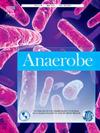常见化妆品成分对人类皮肤上主要的痤疮角质层细菌生长的影响。
IF 2.6
3区 生物学
Q3 MICROBIOLOGY
引用次数: 0
摘要
目的:化妆品通常含有多种成分,如乙醇、甘油和吐温80(聚山梨酸80),可能会影响皮肤微生物群的动态平衡。然而,常见成分对人体皮肤微生物群厌氧成员的影响研究甚少。在这项研究中,我们使用体外技术直接评估了常见化妆品成分对主要的人类皮肤厌氧菌痤疮表皮杆菌的影响。材料和方法:将5种化妆品成分添加到7株痤疮C. acnes菌株中,包括3个亚种(I、II和III型)型菌株,并通过基于浊度测量的生长曲线监测其效果。结果:所有菌株对高浓度(10% v/v)乙醇和甘油均表现出生长抑制作用,而低浓度(3%和/或1% v/v)乙醇均能促进细菌生长。非离子洗涤剂Tween 80显著促进了I型菌株的生长,部分菌株还产生了不溶性沉淀,这可能与粉刺的形成有关。相比之下,III型菌株不产生沉淀。腐胺和亚精胺这两种多胺引起了双相反应,高浓度时抑制生长,低浓度时促进生长。结论:痤疮芽胞杆菌亚种/菌株对化妆品成分的反应随成分浓度的不同而不同,往往表现出相反的作用。本文章由计算机程序翻译,如有差异,请以英文原文为准。
Effects of common cosmetic ingredients on growth of dominant human skin inhabitant Cutibacterium acnes
Objectives
Cosmetic products, which typically contain multiple ingredients such as ethanol, glycerol and Tween 80 (polysorbate 80), may influence the homeostasis of the skin microbiome. However, the effect of common ingredients on the anaerobic members of human skin microbiome is poorly studied. In this study, we directly evaluated the effects of common cosmetic ingredients on a dominant human skin anaerobe Cutibacterium acnes using in vitro techniques.
Materials and methods
Five cosmetic ingredients were added to seven C. acnes strains, including type strains of the three subspecies (types I, II, and III), and their effects were evaluated by monitoring growth curves based on turbidity measurements.
Results
All strains exhibited growth inhibition in response to high concentrations (10 % v/v) of ethanol and glycerol, whereas low concentrations (3 % and/or 1 % v/v) of ethanol enhanced bacterial growth. The nonionic detergent Tween 80 significantly enhanced the growth of type I strains, with some strains also producing insoluble precipitates, which may relate to comedogenesis. In contrast, type III strains did not produce precipitates. The two polyamines, putrescine and spermidine, elicited a biphasic response, with growth inhibition observed at higher concentrations and growth promotion at lower concentrations.
Conclusion
The response of C. acnes subspecies/strains to the cosmetic components varied with the different ingredient concentrations, often exhibiting opposite effects.
求助全文
通过发布文献求助,成功后即可免费获取论文全文。
去求助
来源期刊

Anaerobe
生物-微生物学
CiteScore
5.20
自引率
8.70%
发文量
137
审稿时长
76 days
期刊介绍:
Anaerobe is essential reading for those who wish to remain at the forefront of discoveries relating to life processes of strictly anaerobes. The journal is multi-disciplinary, and provides a unique forum for those investigating anaerobic organisms that cause infections in humans and animals, as well as anaerobes that play roles in microbiomes or environmental processes.
Anaerobe publishes reviews, mini reviews, original research articles, notes and case reports. Relevant topics fall into the broad categories of anaerobes in human and animal diseases, anaerobes in the microbiome, anaerobes in the environment, diagnosis of anaerobes in clinical microbiology laboratories, molecular biology, genetics, pathogenesis, toxins and antibiotic susceptibility of anaerobic bacteria.
 求助内容:
求助内容: 应助结果提醒方式:
应助结果提醒方式:


